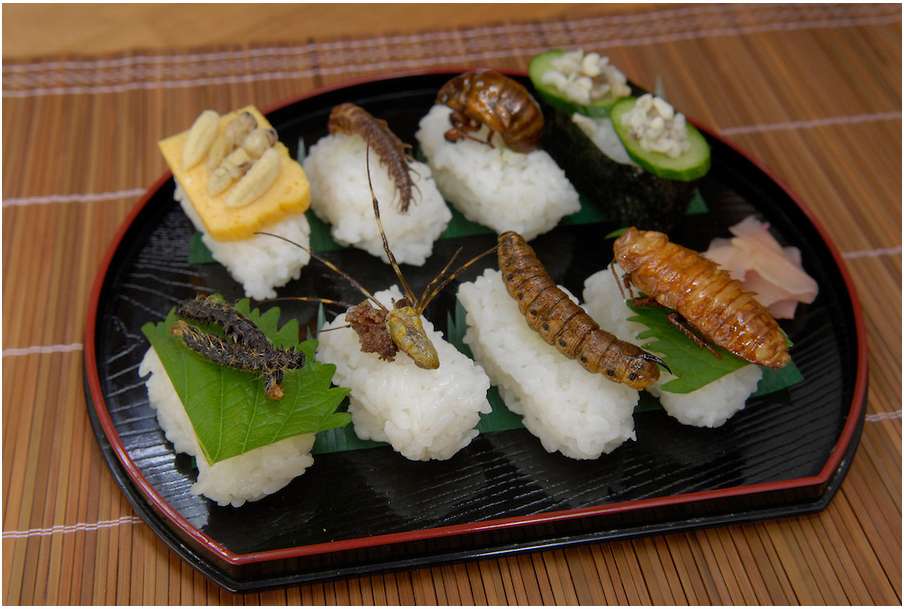|
TORONTO -- Imagine grabbing a mealworm powder smoothie for breakfast, snacking on chocolate chip and cricket cookies at work and coming home to a big bowl of pasta drenched in a cricket bolognese sauce.
Also read, Food innovators consider beef grown in a laboratory and other protein options. A number of entrepreneurs are banking on this environmentally friendly, nutritionally dense protein hopping into the average Joe’s diet and are cooking up products to help make these critters a pantry staple. “It’s moving away from the novelty. It’s moving away from the fear factor,” says Eli Cadesky, co-founder and CEO of C-fu Foods in Toronto. The company sells textured insect proteins that can replace traditional meat, soy, eggs or dairy when cooking. His second company, One Hop Kitchen, uses the product to make two bolognese sauces _ one with crickets and the other with mealworm. The Food and Agriculture Organization of the United Nations encourages entomophagy _ or the eating of insects _ because of its environmental and health benefits. Most insects likely produce less greenhouse gases, require less water and feed, and need less land than traditional livestock, according to the FAO. They also tend to be high in fatty acids, fibre and micronutrients, and don’t tend to transmit diseases to humans. A bottle of One Hop Kitchen’s pasta sauce costs US$9.99 in the U.S. and C$9.99 in Canada. People trying One Hop Kitchen’s products now do so because they want to be more conscious consumers, Cadesky says, with 25 to 50 year-olds identifying as vegetarian, vegan or flexitarian, meaning they sometimes eat meat, making up the bulk of his customer base. Around the world, humans eat more than 1,900 types of insects, including beetles, caterpillars and bees, according to the FAO _ often because they’re a favoured food and not due to a lack of options. Most of the insects are consumed in Asia, Africa and Latin America. The trick to helping the protein become more commonplace in North America is to package it in ways that make it easy to add to the average person’s diet, says Esther Jiang, the CEO of Toronto-based Gryllies, which sells a pasta sauce made with crickets. “Everyone wants to eat better _ whether it’s for themselves or the environment. But, there is a big learning curve associated with that,” she says. “So, we want to just essentially break down the barriers to make it more accessible to everyone.” Pasta sauce, for example, is something most everyone knows how to make. The only difference is that Gryllies and One Hop Kitchen’s products include insects. At Gryllies’s last visit to a local market, the company sold out of its tomato sauce before the day was over, she says, and staff had to return to the kitchen to create more for the next day’s event. Jiang finds about 80 per cent of passers-by of a Gryllies booth are willing to sample some sauce and buy into the environmental and health benefits. After they taste it and see how it can fit into their eating repertoire, she says, “it is such an easy sell. It just makes sense.” The market for edible insects is growing rapidly, says Alex Drysdale, who launched CrikNutrition, a Winnipeg-based company that sells a cricket protein powder, in the spring of 2015. Between 2016 and 2024, the edible insect market is expected to have a compound annual growth rate of 6.1 per cent, according to a report published last August by Persistence Market Research. By the end of 2024, it will account for US$722.9 million. Drysdale says he fields calls nearly every week from individuals starting up insect farms or insect protein companies. Anticipating growing demand, all three companies plan to expand their offerings in the future. One Hop Kitchen is tinkering with a curry and a spicy Arrabbiata sauce, while Gryllies is eyeing other types of alternative proteins, like algae. Still, they recognize they can’t convert everyone right away. Sometimes, people refuse to stop by Gryllies’s booth at markets when they hear what the company is selling, says Jiang, who assumes they can’t overcome the emotional or mental barrier of eating something with the reputation of a creepy and crawly. She remains optimistic that most will overcome that reaction eventually. “With any new trend that comes with food, it does take some time,” says Jiang. “But I think it’s only a matter of time that it becomes more mainstream.” SOURCE The Canadian Press
0 Comments
Leave a Reply. |
Advertisement
News & Updates
Stay informed with the latest news around foodservice, agriculture and other related food news. Advertisement Opportunities
|


 RSS Feed
RSS Feed


